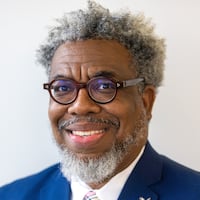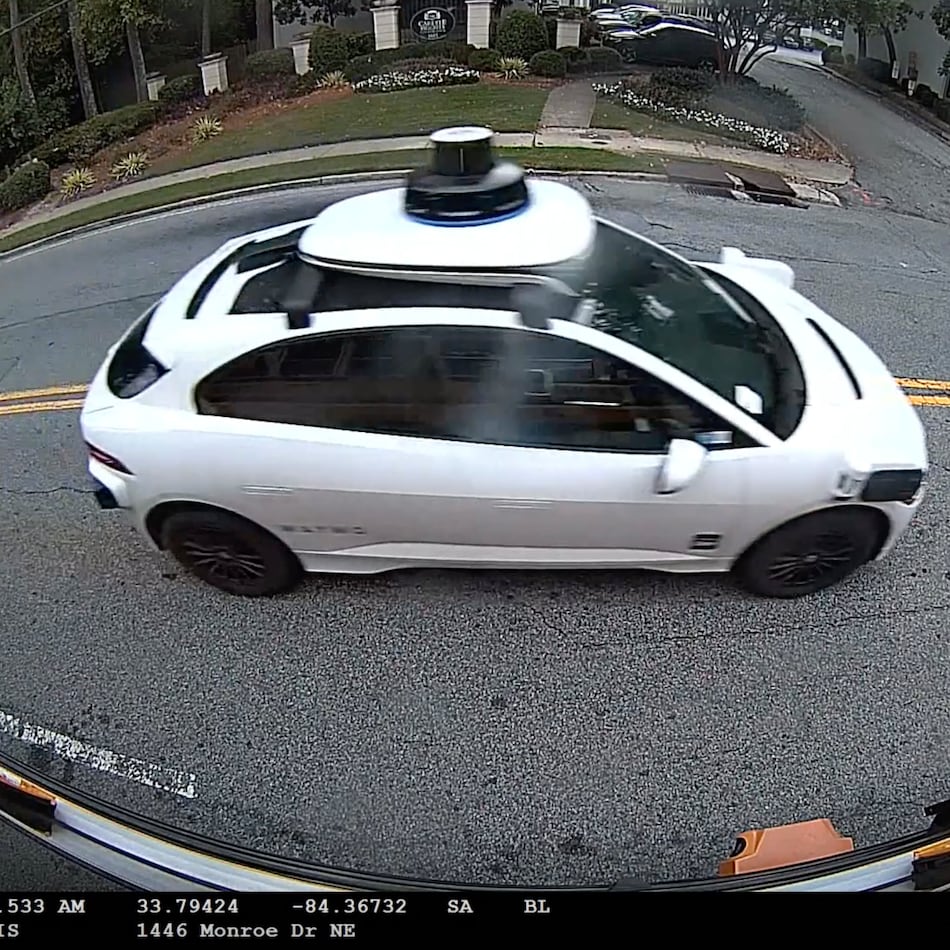When Sandra Gordon purchased her first home in 1998 in the Old Fourth Ward, her monthly mortgage and property tax bill was $250.
That was about the going rate when crime had taken over the intown neighborhood where Martin Luther King Jr. was born.
“I was scared when I first moved over here, because there were so many drug dealers around,” said Gordon, who is 61. “But it has changed. A lot of good people have moved in. It reminds me of the old days, when I was a little girl.”
Her monthly bill is now $604, mostly because of rising house prices, which push up property taxes. Gordon is relying on an $870 monthly disability check “and God. I pray a lot.”
“If things keep going the way they are going, I am going to have to sell and move somewhere else,” said Gordon, who also takes care of an adult nephew and a 5-year-old niece she calls Love Bug. “I was born here, and I want to stay, but I might not have any other choice.”
In 2018, the average sale price of an Old Fourth Ward home was $660,000. That’s up from $280,000 in 2013, according to Adams Realtors.
Because tax assessors are still playing catch-up, Gordon and her neighbors face even higher property taxes in the coming years.
Home prices also are surging in neighboring communities like Inman Park, Poncey-Highland and Midtown, part of a gentrification wave sweeping across intown Atlanta after many wealthy residents abandoned the city in earlier decades for the suburbs.
One reason for the sea change is the Atlanta Beltline, the former railway corridor converted into a walking and biking trail in 2012. In addition to boutiques, restaurants and craft breweries, city officials promised affordable housing. The former happened. The latter hasn’t.
In Atlanta, and elsewhere in the United States, gentrification is often about wealthy whites displacing poor blacks. Nowhere is that dynamic playing out more than in the city’s Old Fourth Ward.
Money pours into once-neglected neighborhood
To understand the Old Fourth Ward is to understand Atlanta. One of the city’s most historic black enclaves, it is now one of its most diverse neighborhoods.
“It is the cultural and spiritual heart of Atlanta. King was born and preached here,” said Atlanta City Councilman Amir Farokhi, who moved to the neighborhood in 2015. “The neighborhood has gotten whiter, younger and arguably more affluent.”
As many as 23,000 people — mostly working-class blacks — lived here in 1960. By the 1970s, more than half of the population had abandoned the area as drugs, gang violence and a migration to the suburbs took hold.
As late as 2000, 76% of the 12,244 residents were black and 16% were white in the Old Fourth Ward/Sweet Auburn Neighborhood Statistical Area, according to the Atlanta Regional Commission.
By 2015, the population rose to 14,321 people, but the black population dropped to 49.5% as the white population rose to 39%. Over the same period, median household income soared from $19,614 to $42,627.
Allesen Cann, a real-estate agent, moved to the neighborhood a few years ago and has watched the change up close.
“I am always torn. I hate that people feel like they can’t stay,” said Cann, who is white. “But this is also great for the neighborhood when you see new restaurants and amenities come in. And these same people are getting a much higher price than they would otherwise.”
On the section of Auburn Avenue where King was born in 1929, large two- and three-story homes still stand across from rows of shotgun houses. Today new lofts, townhomes and condos share space with aged buildings and century-old bungalows.
Homeless people beg for money on streets where diners eat at some of the city’s best restaurants. In another sign of change, according to older black residents, white women jog and walk their dogs on streets that drug dealers once ruled.
Historic Fourth Ward Park, formerly contaminated land at the lowest point of an 800-acre drainage basin, is a popular destination after a $25 million rehabilitation.
The park and nearby Ponce City Market, a long-empty Sears, Roebuck warehouse now filled with expensive lofts and high-end retailers like Williams Sonoma, are anchors of the Beltline project. The project also has promised at least 5,600 affordable houses and apartments by 2030, but a 2017 study by The Atlanta Journal-Constitution found that only 800 had been funded.
Today the Beltline is still a long way from meeting its affordable housing goals and “is not keeping up with the demographic and racial changes,” said Nathaniel Smith, founder of the Partnership for Southern Equity, a regional organization pushing for inclusive growth.
For some, a return to a different kind of home
In 1957, Darryl Hollomon’s great-grandparents were offered a chance to buy a two-story house they were renting on Morgan Street for about $10,000. The great-grandfather, a preacher, believed men of God should live humbly and declined.
By 2013, that same 1,528-square-foot home sold for $260,000. Next door to the old Hollomon house, a new mansion — tall, boxy and modern — is rising out of the soil. Many of the newly built homes are being listed for more than $800,000.
“I wish he had bought it then,” said Hollomon, who was born in the Old Fourth Ward and remembers the vegetable man coming down the street and his grandmother sweeping the porch and their part of the sidewalk.
He moved out of the neighborhood when he was 12. But in 2015 Hollomon and his husband Glyn Williams were looking for an intown home to raise their twins. They bought a house on Pine Street, just a few blocks from the old Morgan Street house.
“It was like coming back home,” said Holloman, who is black and vice president for student affairs at Spelman College.
Their kids go to the same elementary school Hollomon attended and play in the same streets. But the changes are stark.
“The community I grew up with, you don’t see anymore,” he said. “In five years, this is going to be an extension of Midtown with fewer people of color and more people of means.”
From his porch he points to a large house on the corner that he said five generations of black women once lived in. Then one day, they were gone. One of them later told Hollomon they couldn’t afford the higher taxes.
“They either had to sell their house or they lost it,” Hollomon said. “It can be shameful or embarrassing for people.”
Some build bigger, others worry they can afford to stay
Five years ago Leslie Quigless, a black single mother, and Michael Looney, a white married father of two, moved into the Old Fourth Ward.
Today their outlooks are different.
Looney, 56, dressed in a green Atlanta Beltline T-shirt, is a bundle of energy as he inspects construction on his John Wesley Dobbs home. Looney moved his family to the Old Fourth Ward after his then-6-year-old son saw a homeless man in their local Gwinnett County mall.
“We lived in a big house in a big tennis and swim community. But we were in a bubble,” said Looney, adding everyone told him to live in the suburbs when he moved to Georgia from Miami.
So they got a 1,300-square-foot, two-bedroom, two-bathroom bungalow in the Old Fourth Ward. When the family outgrew it, he tore it down to build a two-story, four-bedroom house twice the size.
“When we first moved here, people thought we were crazy. They said it was unsafe and the prices were too high. Now they want in,” said Looney, who does safety management in commercial real estate. “But, on the other side, I don’t know what my taxes are going to be and that is very concerning.”
In 2016, thousands of Fulton County homeowners were stunned when property taxes skyrocketed after the county, for years, had failed to keep up with rising values. The rates were eventually frozen at 2016 rates after a court battle, but at some point homeowners are bracing for another hit.
Just a few blocks from Looney, Quigless is in no immediate danger of losing her home that she bought through a city-sponsored program to help low-income, first-time buyers. But the 42-year-old owns a tutoring business, so her income can change month to month. The monthly tax bill on her house has gone up by $250.
“I have looked into possibly selling my house in anticipation of not being able to afford the taxes any more and that is scary,” said Quigless, whose house is down the street from where King was born. “We have to ask, what do we want this neighborhood to be?”
Time to revisit property taxes?
That is a question Farokhi, the Atlanta councilmember, struggles with daily.
Old Fourth Ward residents pay property taxes to the city of Atlanta, Atlanta Public Schools and Fulton County. A sliding scale of exemptions that reduces county or school taxes for low- and middle-income seniors kicks in at ages 62, 65, and 70. In the city of Atlanta, voters recently also passed a measure that would limit the annual tax increases for homeowners.
Farokhi, a native to Atlanta and Iranian-American, doesn’t think that is enough. He is mulling a proposal to give longtime residents more tax breaks so they don’t get priced out of their neighborhoods. Another council member, Marci Collier Overstreet, is pushing a resolution that the Atlanta Board of Education and Fulton County Board of Commissioners jointly propose a special legacy tax relief program.
Farokhi also points to the “Anti-Displacement Tax Fund Program” across town for residents of English Avenue, Vine City, Ashview Heights and the Atlanta University Center communities. Created by the private-sector Westside Future Fund and the city of Atlanta, it aims to protect longtime residents from tax increases as development projects like Mercedes-Benz Stadium and the Beltline boost real-estate prices.
“Part of my job is to ensure that the legacy and personality of the Old Fourth Ward is retained,” said Farokhi. “We don’t need to lose our soul.”
Gordon, at 61, doesn’t qualify for any of the existing property tax breaks.
Sitting in her living room, watching her niece, she is praying that her taxes don’t go up again. Praying that she will reach some of those age landmarks for exemptions. Praying she can make it to 2028, when the house will be hers outright.
Looking out of her steel storm door, a reminder of when crackheads, prostitutes and drug-dealers plied their trade in front of her house, she waves at a neighbor — a white woman — jogging.
“It is a better neighborhood and I love my neighbors,” said Gordon, who is black. “I have seen it nice. I have seen it get worse and now I have seen it turn around. I just hope I can hold out a few more years.”
About the Author
Keep Reading
The Latest
Featured









